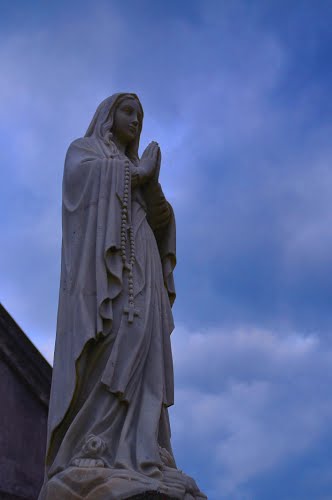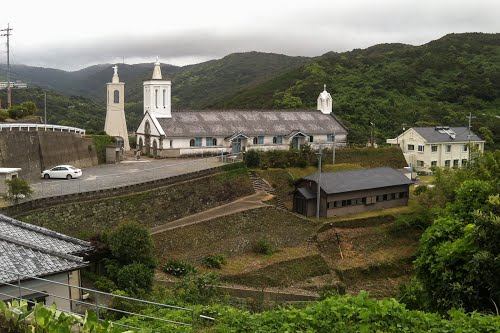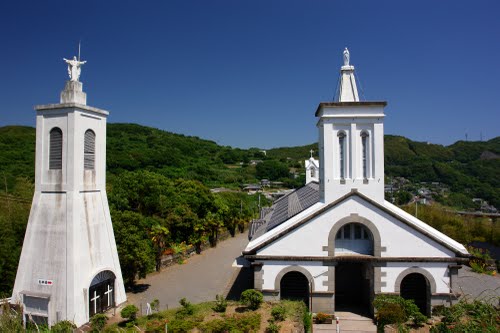This asset is composed of the Kotabira village, which retains some of the atmosphere of the time of the Anti-Christian Edicts, the Shitsu Church built after the Edicts were repealed, and the former Shitsu Aid Center. Of these, the Shitsu Church was built according to the design and guidance of Father Marc Marie de Rotz; it was at first only half its present size, but a second addition in 1909 added a square belltower to the front hall area, giving it its present dimensions. It is characterized by its low and flat appearance and interior, built to take into account the strong winds of the Sotome area. Father de Rotz was involved with the church from the laying of its foundation stone through its expansion.
Father de Rotz not only worked to improve the lifestyles of the people in the region, but also strove for the education of women, as mothers and daughters are those who educate the younger children. He worked to convey religious education in simple words, laying the foundation for the exceptionally large number of bishops and priests produced by the region.
Father de Rotz carried out the design and construction of the Shitsu Church from the beginning and through its two additions. Like Oura Cathedral (a national treasure), it is made of mortared-over brick, so that at first glance it does not appear to be made of brick at all. The nearby Father de Rotz Memorial Hall contains documents on its design.






